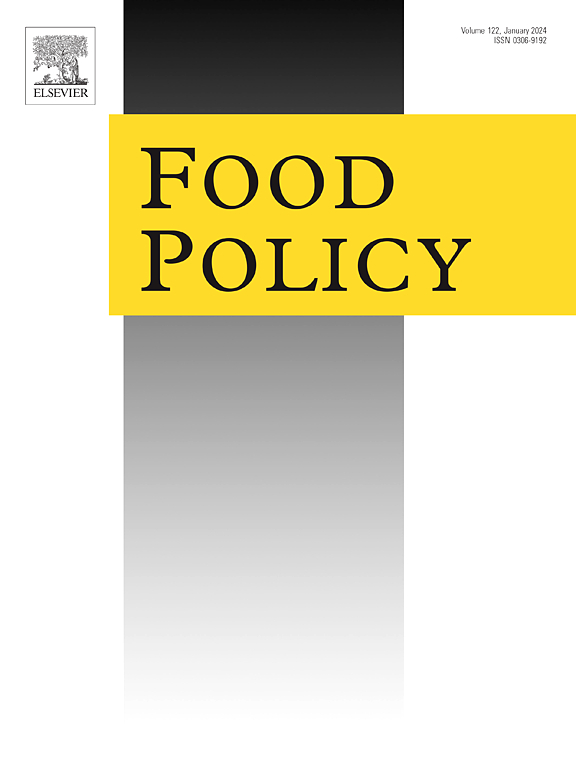The use of crop diversification in agricultural yield insurance products
IF 6
1区 经济学
Q1 AGRICULTURAL ECONOMICS & POLICY
引用次数: 0
Abstract
Crop production is exposed to many sources of biotic and abiotic risks, such as extreme weather, pests, and diseases. Crop diversification and crop insurance are both important risk management strategies for farmers. The two strategies are usually considered separately. Here, we propose to exploit potential synergies by including crop diversification in multiple crop yield insurance designs. We provide an ex-ante analysis to compare multiple-yield insurance, which covers the different crops together as a bundle, with single-yield insurances. To this end, we use historical farm-level yield observations for winter wheat, winter barley, winter rapeseed, sugar beet and grain maize in German agriculture (N = 113,463 historical farm-level yield observations during 1995–2019) and assess the implications for risk reduction, fair insurance premiums, and expected utility. In our analysis, we refer to the area-weighted and price-weighted revenues as the underlying for both insurance scenarios. We show that multiple-yield insurance is particularly attractive for highly risk-exposed farms because multiple-yield insurance has lower fair insurance premiums compared to insuring each crop separately. Moreover, the certainty equivalents in the multiple-yield insurance scenario are often higher than those in the single-yield insurances scenario, especially when the premium loadings are high. In addition, the fact that broader crop rotations and diversification are rewarded with lower premiums under multiple-yield insurance offers the potential to combine the overarching policy goals of agricultural risk management and diversification of agricultural landscapes.
农作物多样化在农业产量保险产品中的应用
作物生产面临许多生物和非生物风险来源,如极端天气、病虫害。作物多样化和作物保险都是农民重要的风险管理策略。这两种策略通常是分开考虑的。在这里,我们建议通过在多种作物产量保险设计中包括作物多样化来利用潜在的协同效应。我们提供了一个事前分析来比较多产量保险,它涵盖了不同的作物一起作为一个束,与单产量保险。为此,我们使用德国农业中冬小麦、冬大麦、冬油菜籽、甜菜和谷物玉米的历史农场水平产量观测数据(N = 113,463 1995-2019年的历史农场水平产量观测数据),并评估风险降低、公平保险费和预期效用的影响。在我们的分析中,我们将地区加权和价格加权收入作为两种保险情景的基础。我们表明,多产量保险对高风险农场特别有吸引力,因为与分别为每种作物投保相比,多产量保险的公平保险费较低。此外,多收益保险情景中的确定性等价物通常高于单收益保险情景,特别是当保费负担较高时。此外,在多产量保险下,更广泛的作物轮作和多样化可以获得较低的保费,这一事实提供了将农业风险管理和农业景观多样化的总体政策目标结合起来的潜力。
本文章由计算机程序翻译,如有差异,请以英文原文为准。
求助全文
约1分钟内获得全文
求助全文
来源期刊

Food Policy
管理科学-农业经济与政策
CiteScore
11.40
自引率
4.60%
发文量
128
审稿时长
62 days
期刊介绍:
Food Policy is a multidisciplinary journal publishing original research and novel evidence on issues in the formulation, implementation, and evaluation of policies for the food sector in developing, transition, and advanced economies.
Our main focus is on the economic and social aspect of food policy, and we prioritize empirical studies informing international food policy debates. Provided that articles make a clear and explicit contribution to food policy debates of international interest, we consider papers from any of the social sciences. Papers from other disciplines (e.g., law) will be considered only if they provide a key policy contribution, and are written in a style which is accessible to a social science readership.
 求助内容:
求助内容: 应助结果提醒方式:
应助结果提醒方式:


